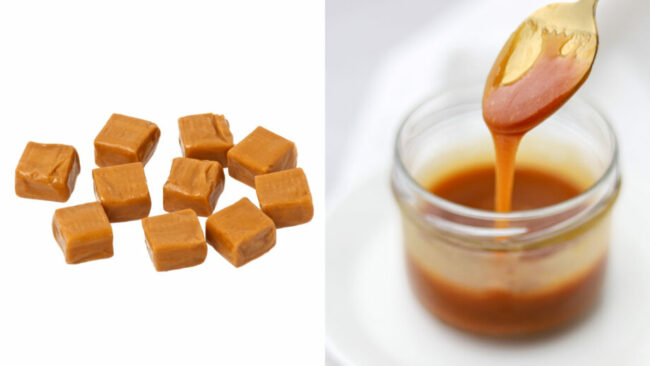When it comes to dessert toppings, butterscotch, and caramel often come to mind. Both offer a delightful sweetness, but many might find it challenging to distinguish one from the other. Here, we’ll explore their unique characteristics to provide clarity.
Sugar’s Role in Caramel and Butterscotch
A key difference between the two lies in the type of sugar used. Caramel originates from the browning of white granulated sugar, which gives it a toasted taste. On the other hand, butterscotch gets its flavor from brown sugar, which has a depth due to its molasses content.

Another distinction is the cooking temperature. Butterscotch requires a lower heat, settling at around 289 degrees Fahrenheit, while caramel heats up to 340 degrees Fahrenheit. This difference in temperature can change the texture and flavor of the final product.
Butterscotch Defined
Brown sugar and butter are the primary components of butterscotch. Some variations might include cream, vanilla, or salt. A common misconception is the association of whiskey with butterscotch. Contrary to popular belief, “Scotch” might refer to the “scorching” of sugar or the older practice of “scoring” the cooled confection.
Historically, butterscotch had syrups from sugar production, like treacle or molasses. Now, it often contains dark brown sugar. The molasses undertones in butterscotch make it a versatile addition to various dishes.
Caramel’s Characteristics
Whether you pronounce it ca-ra-mal or care-a-mel, caramel is essentially heated granulated sugar. Some variations combine white sugar, heavy cream, butter, and vanilla extract, producing a versatile sauce. Caramel can include dairy, or be prepared with alternatives like wine or fruit juice. And while optional, the addition of salt balances its sweetness.
Caramel’s versatility means it complements a wide range of dishes, from pancakes and coffees to cookies.
Distinguishing the Two
While they might seem similar, butterscotch and caramel have distinct flavors. Butterscotch, with brown sugar as its base, has a sweet, molasses-like taste. Caramel, made from white sugar, offers a nuttier flavor profile.
When it comes to texture, butterscotch candies tend to be more solid compared to the softer caramel candies. However, both can benefit from a pinch of sea salt.
The choice between butterscotch and caramel often boils down to personal preference. Both have their unique places in culinary history.
Substitution Possibilities
If you’re contemplating whether one can replace the other, the answer is yes. They can usually be interchanged in recipes at a 1:1 ratio, thanks to their similar texture and flavor profiles. However, each will bring its unique touch to a dish.
In conclusion, both butterscotch and caramel stand as two distinct sweet delights. Whether you prefer butterscotch or caramel, both are essential in the dessert industry.

Editorial Staff
Our writers, editors, content managers, and SEO specialist. We all take part in crafting amazing articles. We spend hours ensuring that each article is based on facts, researched, and thorough. You'll never want to click the back button to look for more answers other than here!
